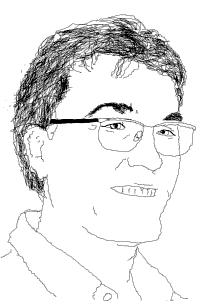 The denial of one’s own existence might seem a desperate philosophical strategy, but denying the reality of the self is a line which a number of people have taken, and Thomas Metzinger is prominent among them. The thesis of his massive 2003 work is summed up in the title: Being No One: The Self-Model Theory of Subjectivity. In that book, Metzinger made a commendable effort to balance philosophy and science; but the sheer size of the resulting text may have deterred some readers – I confess to being somewhat daunted myself. Now he has come back with a slimmer volume The Ego Tunnel which is aimed at a wider public and raises wider issues which Metzinger suggests need public attention.
The denial of one’s own existence might seem a desperate philosophical strategy, but denying the reality of the self is a line which a number of people have taken, and Thomas Metzinger is prominent among them. The thesis of his massive 2003 work is summed up in the title: Being No One: The Self-Model Theory of Subjectivity. In that book, Metzinger made a commendable effort to balance philosophy and science; but the sheer size of the resulting text may have deterred some readers – I confess to being somewhat daunted myself. Now he has come back with a slimmer volume The Ego Tunnel which is aimed at a wider public and raises wider issues which Metzinger suggests need public attention.
Metzinger’s theory – the Self-model Theory of Subjectivity or SMT – suggests that subjective experience is really a kind of trick the brain plays on itself. Our brain sets up a model of the world (actually based on fairly limited data) to which it then adds a model of us, ourselves. The coherence of the model and the fact that the processes supporting it are transparent – ie invisible to us – yield the vivid impression of a self in direct contact with reality, and that’s where subjectivity arises; although in fact the whole thing is simply an illusion.
Metzinger’s view of qualia is characteristically complex. He has a good argument against the existence of what he calls canonical qualia, qualia conceived as subjective universals. He points out that our ability to discriminate is far greater than our ability to recognise. So, if we are presented with examples of green 64 and green 66, we can readily tell the difference: but if at a later stage we are presented with one of the examples, we have no hope of telling which it is. So there is no single thing that consistently goes along with the experience of green 64.
Concluding that at any rate we need to distinguish between ‘qualia’ available to memory and qualia available to the faculty of recognition, Metzinger goes on to distinguish a series of possible conceptions of qualia, ending with ‘Metzinger qualia’ which are available attentionally but not cognitively. These are slippery customers for obvious reasons, impossible to report and broadly ineffable – but then that’s how qualia are generally assumed to be.
Even as a summary, the foregoing is a bare and radically, probably over- simplified view of the theory, however. Metzinger actually presents ten constraints which need to be satisfied for the occurrence of subjective experience: they are:
- Globality; as in ‘global workspace’; conscious items are always integrated into an overall world-model,
- Presentationality; present in the now , temporal immediacy,
- Convolved holism; objects of experience are made up of collections of other objects in a nested hierarchy,
- Dynamicity; the perceived world flows through constant changes,
- Perspectivalness; we experience the world from a point of view,
- Transparency; we cannot see the works – the neural processing which gives rise to our experience is excluded from conscious experience,
- Offline activation; subjective experience is not confined to the live inputs from our senses, a notable exception being dreams, where a whole non-existent world appears.
- Representation of intensities; besides distinguishing between qualia (whichever version we’re dealing with) we can distinguish their levels of intensity,
- Homogeneity; areas of pink, for example, are made up of smaller areas of pink, not red and white at once, and
- Adaptivity; the features of subjective experience have to be things that could reasonably have appeared in the course of evolution.
You may feel that there’s something a bit odd about this list, especially the appearance of ‘adaptivity’. One does not have to be a creationist to feel uneasy about the idea that that is really an essential feature of conscious experience in any deep sense. In a précis which he prepared for a discussion on the Psyche site – sadly this no longer appears to be available – Metzinger discussed only the first six constraints, which suggests that the last four are at least somewhat dispensable. This is a bit confusing – is homogeneity essential to conscious experience, or was that just a kind of bonus, a description of a property of phenomenal experience which is important but not a defining requirement? I think one issue here may be that Metzinger seems to want to do two jobs at once; he wants to explain subjectivity in a philosophical sense, but he also wants to describe and categorise phenomenal experience in a way which can be related to scientific observation, clarifying the puzzling phenomenology of blindsight and other unusual conditions. These are not incompatible aims, exactly, and there’s no absolute reason why one account couldn’t do both, but there is a tension. A robust philosophical explanation would pare down the account to its essentials, while the description of subjectivity seems to be something we would want to do as fully as possible.
So Metzinger, for example, notes that convolution is one property of phenomenal experience and homogeneity is another. If we’re looking for one kind of explanation, to be told that subjective experience breaks down into things which are different, and also that subjective experience sometimes breaks down into things that are the same, is not very helpful; but as a description of different ways phenomenology can work it’s a legitimate clarification.
In the new book, Metzinger boils the requirement down in terms which make it easier for us to get to grips with the theory in ways that relate to our usual concerns here, by asking what it would take to build an Ego Machine, an artificial conscious subject.
The recipe requires us to begin with an integrated and dynamical world-model . We must then ensure that the information flow is organised so as to assign events to a present moment, a Now; and that the images presented by the model are transparent: again, we must not be able to see the works. If these constraints are satisfied, a world appears. The last step is to add to the model an equally transparent representation of an experiencing self; then the artificial entity will finally appear to itself to be someone, and to be there. There will seem to be someone in the Ego Tunnel, Metzinger’s equivalent of Plato’s cave.
This seems to me to make quite a lot of sense, but the reader’s verdict is likely to be determined by whether it ‘feels right’ – does it finally dispel that sense of mystery? It must be taken into account that Metzinger’s theory itself provides strong reasons why his conclusions are going to seem intuitively unacceptable, so a kind of mental ‘aiming off’ may be required. I think we have to ask ourselves two questions. The first is: can we imagine that all of Metzinger’s requirements could be met in the absence of ‘inner experience’: does it seem that we could have his kind of world-model running with a representation of a self in it and yet still be, as it were, only a Metzinger zombie?
If we’re happy that this is not a possibility, there still remains the question of whether Metzinger has smuggled his consciousness into the tunnel. Do any of his constraints covertly imply that consciousness is already present?
I think some of them could – presentationality? Perspectivalness? – but carefully read, I don’t think they need do. Whether some of their intuitive appeal derives from the reader having unconsciously done some illicit importation is, I suppose, a matter for the reader. Some of the constraints do look a bit strange in other ways. Let’s consider that requirement of transparency, for example. In the ego tunnel, data about the outside world must be globally available, but there must be no information about how this data got to the tunnel, since that would dispel the illusion that what we are dealing with is the real world itself. But why would there be? A TV screen does not automatically contain an account of how the TV itself or the local transmitter works. Metzinger has an odd perspective here which seems to start with the idea that the mind naturally knows everything and has to be carefully shielded. In The Ego Tunnel he talks about our sensory apparatus filtering out most of the potential information about the world, limiting us to a meagre trickle, as though our natural state was a kind of omniscience which is only reined in by the limitations of our eyes. Isn’t it the other way round?
Look at it the other way: suppose we were consciously aware of the fact that light rays were being processed by our retinas, would that destroy our sense of ourselves as existing in the world? Actually, I doubt it. The fact that we can see the edges of the screen does not inhibit us much from getting immersed in a film: for that matter the very visible appearance of the book does not prevent our getting immersed in a novel. Similarly, the fact that I can see a ‘floater’ in my right eye at the moment doesn’t cause reality to recede from me although it is a tell-tale sign of the visual processes that intervene between my brain and the world.
But there’s more in the Ego Tunnel…
(My apologies if things have been a bit slow here – I rashly committed to Nanowrimo this year so a lot of my energy is going to turning out a 50,000 word novel text this month. You can read the results here. – Peter)
 I suppose the zombies couldn’t have the film industry all to themselves for ever, and here it is: Qualia, the movie (via). I wondered at first whether this was something to do with Sony and their Qualia man Ken Mogi, but in fact it seems it is a small independent venture. I said ‘here it is’, but actually all we have for the moment is a trailer: it seems that the funds required (amounts which I expect wouldn’t cover one day’s catering budget on a Hollywood blockbuster) have been difficult to get together.
I suppose the zombies couldn’t have the film industry all to themselves for ever, and here it is: Qualia, the movie (via). I wondered at first whether this was something to do with Sony and their Qualia man Ken Mogi, but in fact it seems it is a small independent venture. I said ‘here it is’, but actually all we have for the moment is a trailer: it seems that the funds required (amounts which I expect wouldn’t cover one day’s catering budget on a Hollywood blockbuster) have been difficult to get together.
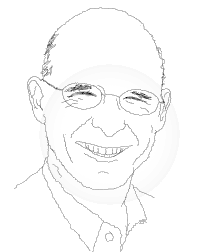 Edge has an interesting
Edge has an interesting The denial of one’s own existence might seem a desperate philosophical strategy, but denying the reality of the self is a line which a number of people have taken, and Thomas Metzinger is prominent among them. The thesis of his massive 2003 work is summed up in the title: Being No One: The Self-Model Theory of Subjectivity. In that book, Metzinger made a commendable effort to balance philosophy and science; but the sheer size of the resulting text may have deterred some readers – I confess to being somewhat daunted myself. Now he has come back with a slimmer volume The Ego Tunnel which is aimed at a wider public and raises wider issues which Metzinger suggests need public attention.
The denial of one’s own existence might seem a desperate philosophical strategy, but denying the reality of the self is a line which a number of people have taken, and Thomas Metzinger is prominent among them. The thesis of his massive 2003 work is summed up in the title: Being No One: The Self-Model Theory of Subjectivity. In that book, Metzinger made a commendable effort to balance philosophy and science; but the sheer size of the resulting text may have deterred some readers – I confess to being somewhat daunted myself. Now he has come back with a slimmer volume The Ego Tunnel which is aimed at a wider public and raises wider issues which Metzinger suggests need public attention.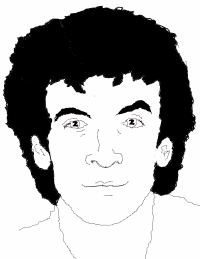 Over at
Over at  Over at the Institute for Ethics and Emerging Technologies, Martine Rothblatt offers to solve the Hard Problem for us in her piece
Over at the Institute for Ethics and Emerging Technologies, Martine Rothblatt offers to solve the Hard Problem for us in her piece 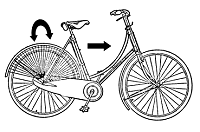 Sam Coleman returned in a recent paper (JCS vol 16, n0 2-3) to the old perennial of
Sam Coleman returned in a recent paper (JCS vol 16, n0 2-3) to the old perennial of 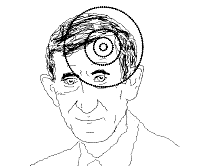 I see that at Edge they have kept up their annual custom of putting a carefully-chosen question to a group of intellectuals. This year, they asked “What game-changing scientific ideas and developments do you expect to live to see?”. There were many interesting
I see that at Edge they have kept up their annual custom of putting a carefully-chosen question to a group of intellectuals. This year, they asked “What game-changing scientific ideas and developments do you expect to live to see?”. There were many interesting